Who is at risk for ebola. Ebola Transmission: Understanding Risks and Prevention Measures
How is Ebola transmitted. Who is at the highest risk of contracting Ebola. What are the primary sources of Ebola infection. How long can Ebola viruses survive outside the body. What precautions should healthcare workers take when treating Ebola patients. How can travelers protect themselves from Ebola in affected regions.
The Primary Routes of Ebola Transmission
Ebola, a rare but severe viral disease, primarily spreads through direct contact with bodily fluids of infected individuals or contaminated objects. Understanding the transmission pathways is crucial for effective prevention and control measures.
What are the main ways Ebola spreads? The virus can be transmitted through:
- Blood or body fluids (including urine, saliva, sweat, feces, vomit, breast milk, amniotic fluid, and semen) of an infected person
- Objects contaminated with body fluids from an infected individual
- Infected fruit bats or nonhuman primates (apes and monkeys)
- Semen from a man who has recovered from Ebola (through sexual contact)
It’s important to note that Ebola is not airborne and cannot be transmitted through casual contact or mosquito bites. The virus can only spread after an infected person develops symptoms, which typically occur after an incubation period.

High-Risk Groups and Scenarios for Ebola Infection
While Ebola poses a significant threat in affected regions, certain groups face a higher risk of infection due to their proximity to the virus or nature of their work.
Who is most at risk of contracting Ebola?
- Healthcare workers treating Ebola patients without proper protective equipment
- Family members and caregivers of Ebola patients
- Individuals handling or consuming infected wild animals (bushmeat)
- People in close contact with infected bats or nonhuman primates
- Travelers to areas with active Ebola outbreaks who don’t take proper precautions
It’s crucial to emphasize that the general public in non-affected areas and travelers who haven’t had direct contact with Ebola patients are at very low risk of infection.
Persistence of Ebola Virus in Survivors
Recent research has shed light on the ability of Ebola viruses to persist in certain parts of the body even after recovery, raising important questions about long-term risks and potential transmission.
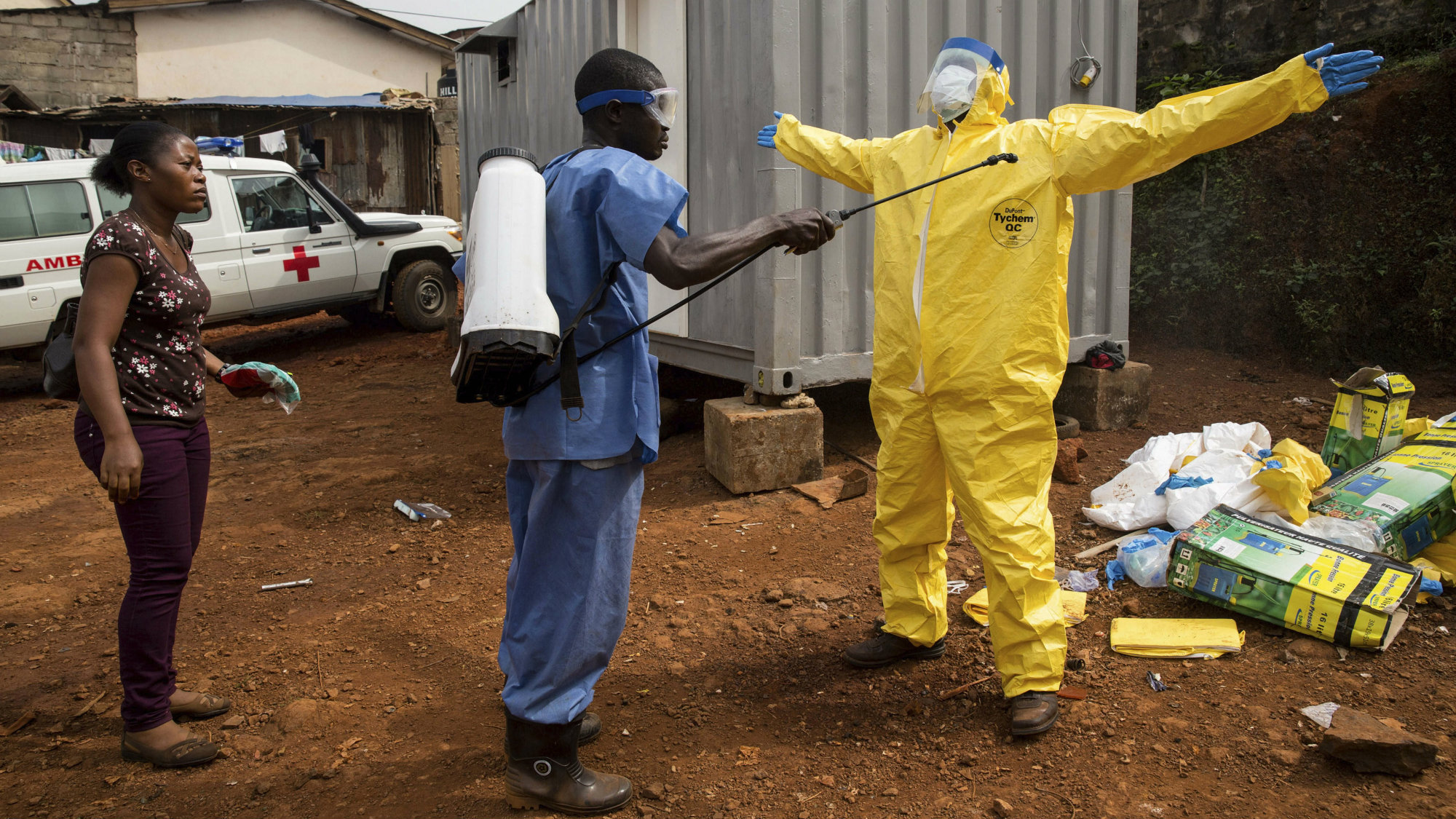
Where can Ebola viruses persist in survivors?
- Testes
- Interior of the eyes
- Placenta
- Central nervous system (particularly cerebrospinal fluid)
These areas are known as immunologically privileged sites, where the virus can be shielded from the immune system. The duration of viral persistence varies among survivors, and ongoing studies aim to determine how long the virus can remain in these bodily fluids.
Ebola Survival Outside the Human Body
Understanding how long Ebola viruses can survive on surfaces and in different environments is crucial for implementing effective disinfection protocols and preventing transmission.
How long can Ebola viruses survive outside the body?
- On dry surfaces (e.g., doorknobs, countertops): Several hours
- In body fluids like blood at room temperature: Up to several days
This persistence highlights the importance of proper cleaning and disinfection in healthcare settings and areas where Ebola patients have been treated. In the United States, hospital-grade disinfectants registered with the Environmental Protection Agency (EPA) and labeled for use against non-enveloped viruses are recommended for Ebola decontamination.

Prevention Measures in Healthcare Settings
Healthcare facilities play a critical role in containing Ebola outbreaks, but they can also become hotspots for virus transmission if proper precautions are not taken.
What steps should healthcare facilities take to prevent Ebola spread?
- Use dedicated, preferably disposable medical equipment for Ebola patients
- Implement proper cleaning and disposal protocols for instruments like needles and syringes
- Sterilize non-disposable equipment before reuse
- Employ hospital-grade disinfectants for cleaning and decontamination
- Ensure healthcare workers use appropriate personal protective equipment (PPE)
- Implement strict infection control protocols and training for all staff
These measures are essential for protecting both healthcare workers and patients, as well as preventing the spread of the virus within medical facilities.
Ebola Risk for Travelers and Preventive Measures
While Ebola outbreaks are typically localized to specific regions in Africa, travelers to affected areas should be aware of the risks and take appropriate precautions.

How can travelers protect themselves from Ebola?
- Consult a travel clinic at least 4-6 weeks before departure (or as soon as possible)
- Check the Ebola risk status of your destination on reputable travel health websites
- Practice good hygiene, including frequent handwashing
- Avoid contact with potentially infected individuals or their bodily fluids
- Refrain from handling or consuming bushmeat
- Follow local health authority guidelines and recommendations
It’s important to note that the risk of Ebola for most travelers remains very low, especially if they follow proper precautions and avoid high-risk activities.
Recent Ebola Outbreaks and Affected Regions
Staying informed about recent Ebola outbreaks is crucial for travelers, healthcare workers, and public health officials to assess risks and implement appropriate measures.
Where have recent Ebola outbreaks occurred?
- Uganda
- Guinea
- Democratic Republic of Congo
These outbreaks have primarily affected Central and West African countries. It’s important to note that Ebola has never been spread from person to person in the United Kingdom or many other countries outside of Africa. However, vigilance and preparedness remain essential for global health security.

The Role of Wild Animals in Ebola Transmission
Understanding the zoonotic nature of Ebola is crucial for preventing future outbreaks and managing risks in endemic regions.
Which animals are known to carry Ebola viruses?
- Fruit bats (considered the natural reservoir)
- Nonhuman primates (apes and monkeys)
- Potentially other wildlife species
The handling and consumption of infected animals, particularly bushmeat, have been linked to Ebola outbreaks in the past. This highlights the importance of wildlife conservation efforts and public education about the risks associated with bushmeat in Ebola-prone regions.
Ebola and Pregnancy: Special Considerations
Pregnant women face unique risks and challenges when it comes to Ebola infection, both for their own health and that of their unborn child.
What are the implications of Ebola for pregnant women?
- Higher risk of severe illness and mortality
- Potential for vertical transmission (mother to fetus)
- Increased risk of pregnancy complications
- Challenges in providing appropriate care during childbirth
Healthcare providers must take extra precautions when treating pregnant Ebola patients, balancing the need for maternal care with infection control measures. Research is ongoing to better understand the long-term effects of Ebola on pregnancy outcomes and infant health.
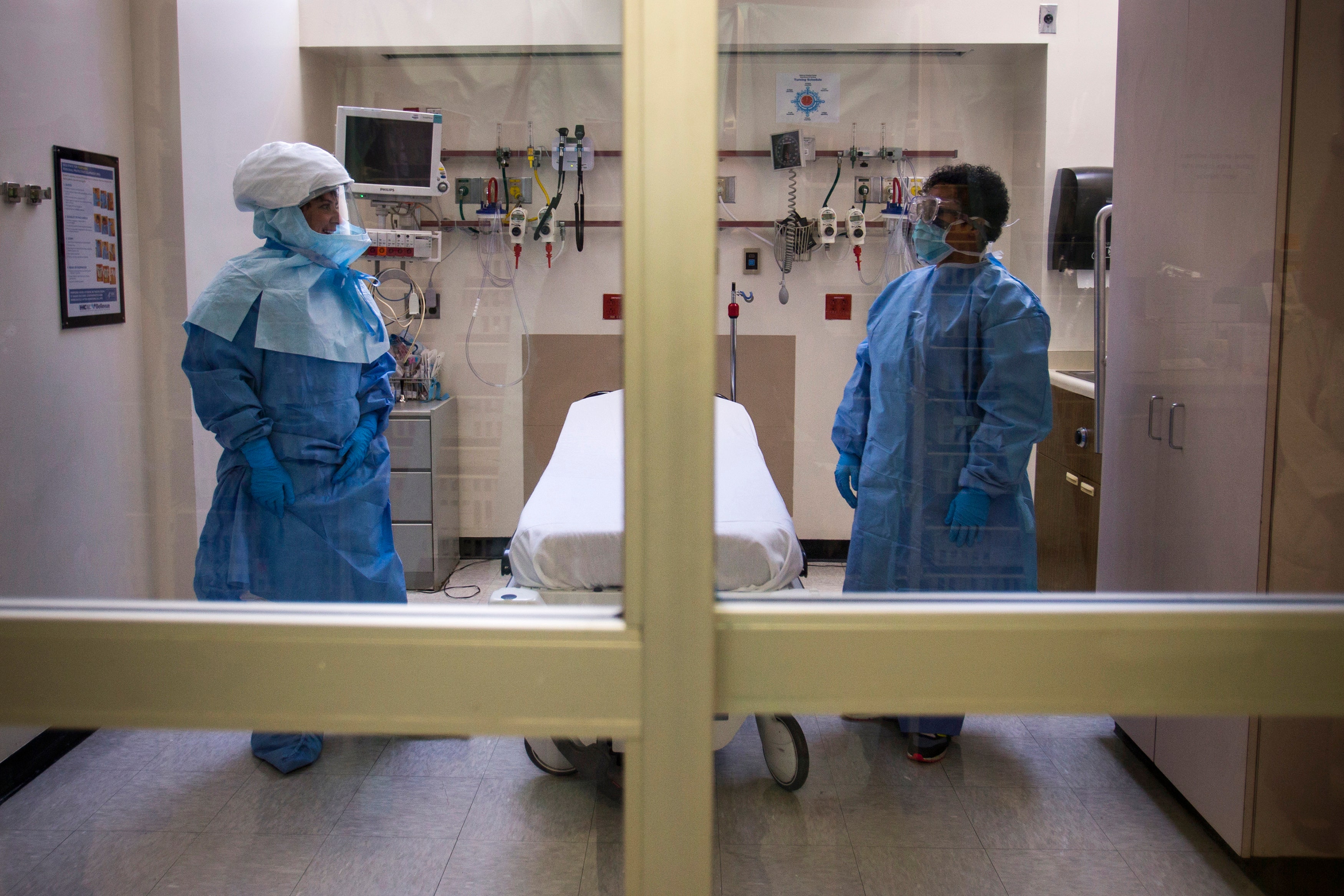
The Importance of Contact Tracing in Ebola Control
Contact tracing plays a vital role in containing Ebola outbreaks by identifying and monitoring individuals who may have been exposed to the virus.
How does contact tracing help control Ebola spread?
- Identifies potentially infected individuals before they show symptoms
- Allows for early isolation and treatment of new cases
- Helps break the chain of transmission
- Provides valuable data for understanding outbreak dynamics
Effective contact tracing requires a well-coordinated effort between public health officials, healthcare workers, and community members. Technology and data management systems have improved the efficiency and reach of contact tracing efforts in recent years.
Ebola Vaccines: Progress and Challenges
The development of Ebola vaccines has been a significant milestone in the fight against the disease, offering hope for better outbreak control and prevention.
What is the current status of Ebola vaccines?
- Several vaccine candidates have been developed and tested
- The rVSV-ZEBOV vaccine has shown high efficacy in clinical trials
- Ring vaccination strategies have been successfully implemented in outbreaks
- Ongoing research aims to improve vaccine durability and coverage
While vaccines represent a major advancement, challenges remain in terms of production, distribution, and ensuring equitable access in affected regions. Continued investment in vaccine research and development is crucial for long-term Ebola prevention and control.
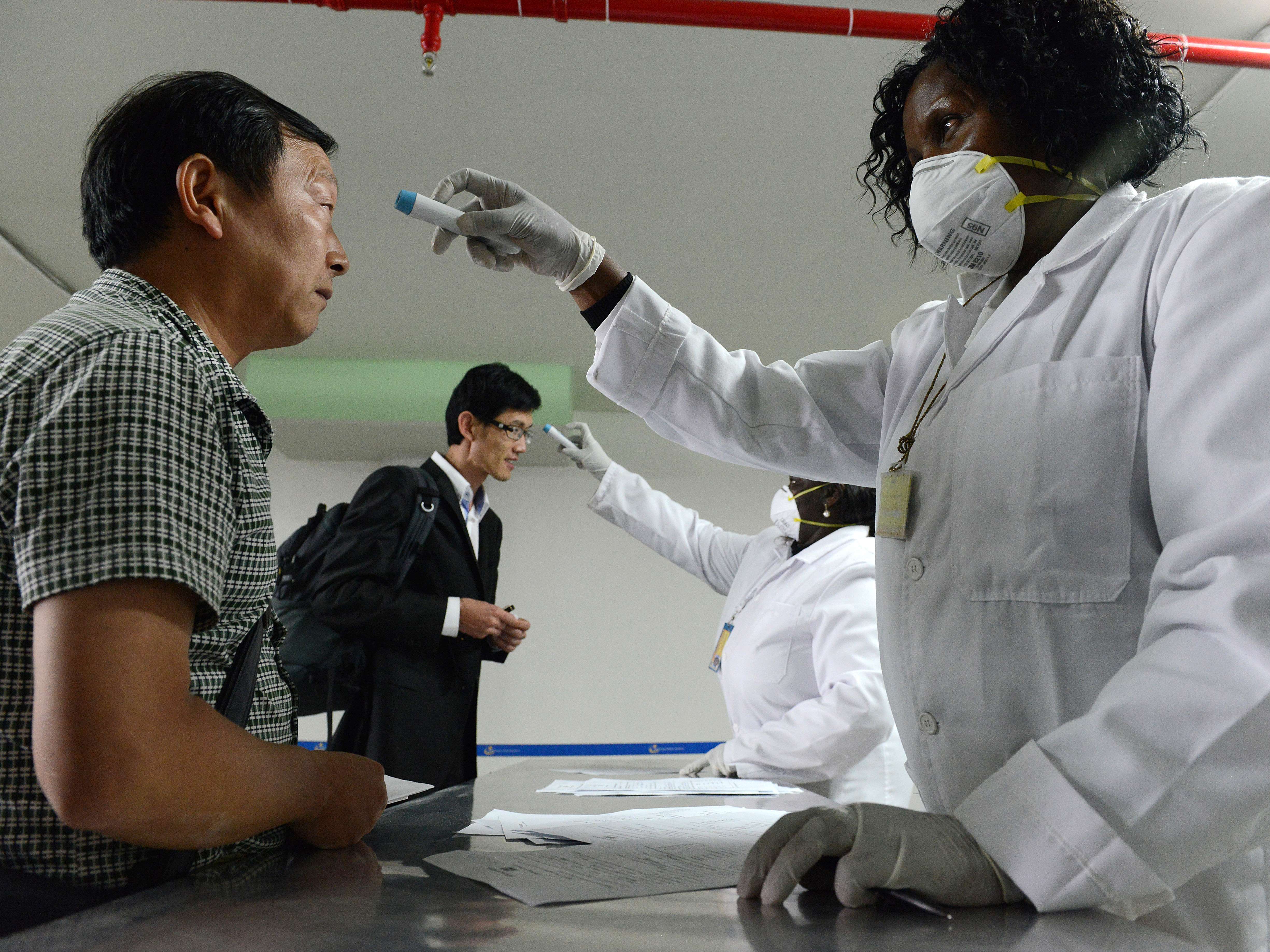
The Economic Impact of Ebola Outbreaks
Ebola outbreaks can have far-reaching consequences beyond public health, affecting local and national economies in significant ways.
How do Ebola outbreaks impact affected countries economically?
- Disruption of trade and commerce
- Decreased tourism and foreign investment
- Strain on healthcare systems and resources
- Loss of productivity due to illness and containment measures
- Long-term effects on economic growth and development
Understanding these economic impacts is crucial for developing comprehensive response strategies that address both the immediate health crisis and the broader socioeconomic consequences of Ebola outbreaks.
The Role of Community Engagement in Ebola Prevention
Effective Ebola prevention and control strategies rely heavily on community engagement and education to foster trust and promote adherence to public health measures.
Why is community engagement crucial in fighting Ebola?
- Helps overcome cultural barriers and misconceptions about the disease
- Encourages early reporting of symptoms and seeking medical care
- Facilitates the implementation of safe burial practices
- Promotes compliance with contact tracing and quarantine measures
- Empowers local leaders to support and reinforce health initiatives
Successful community engagement strategies often involve collaborating with local leaders, religious figures, and traditional healers to ensure that prevention messages are culturally appropriate and widely accepted.
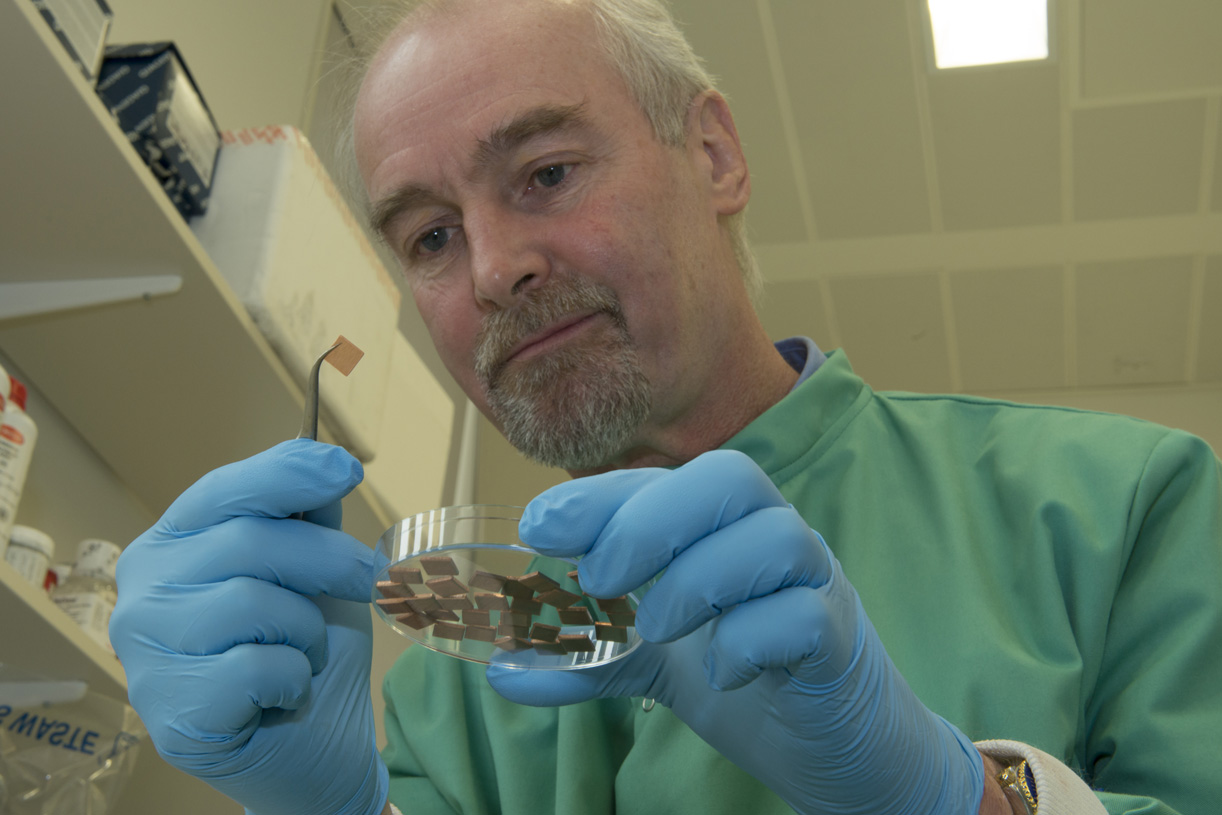
Ebola and Mental Health: Addressing the Psychological Impact
The psychological toll of Ebola outbreaks extends beyond those directly infected, affecting survivors, healthcare workers, and communities as a whole.
What are the mental health challenges associated with Ebola outbreaks?
- Post-traumatic stress disorder (PTSD) among survivors and healthcare workers
- Anxiety and depression in affected communities
- Stigma and social isolation faced by survivors and their families
- Grief and loss due to high mortality rates
- Burnout and compassion fatigue among frontline responders
Addressing these mental health challenges is an important aspect of comprehensive Ebola response and recovery efforts. Integrating psychological support services into outbreak management strategies can help mitigate the long-term impact on individuals and communities.
The Global Health Security Implications of Ebola
Ebola outbreaks serve as a stark reminder of the interconnectedness of global health and the importance of robust international cooperation in disease prevention and control.

How does Ebola impact global health security?
- Highlights weaknesses in national and international health systems
- Demonstrates the need for rapid response capabilities
- Underscores the importance of early detection and surveillance
- Emphasizes the need for cross-border collaboration in outbreak management
- Drives investment in research and development for emerging infectious diseases
Lessons learned from Ebola outbreaks have informed global health strategies and preparedness efforts, contributing to a more coordinated and effective approach to managing future health crises.
The Future of Ebola Research and Prevention
As our understanding of Ebola evolves, ongoing research efforts aim to improve prevention, diagnosis, and treatment strategies.
What are the key areas of focus for future Ebola research?
- Development of more effective and accessible treatments
- Improvement of rapid diagnostic tools for field use
- Exploration of the virus’s ecology and animal reservoirs
- Investigation of long-term health effects in survivors
- Enhancement of vaccine technologies and delivery methods
Continued investment in Ebola research is essential for building resilience against future outbreaks and improving global capacity to respond to emerging infectious diseases. Collaborative international efforts and sustained funding will be crucial in advancing our ability to prevent, detect, and control Ebola and similar threats to public health.
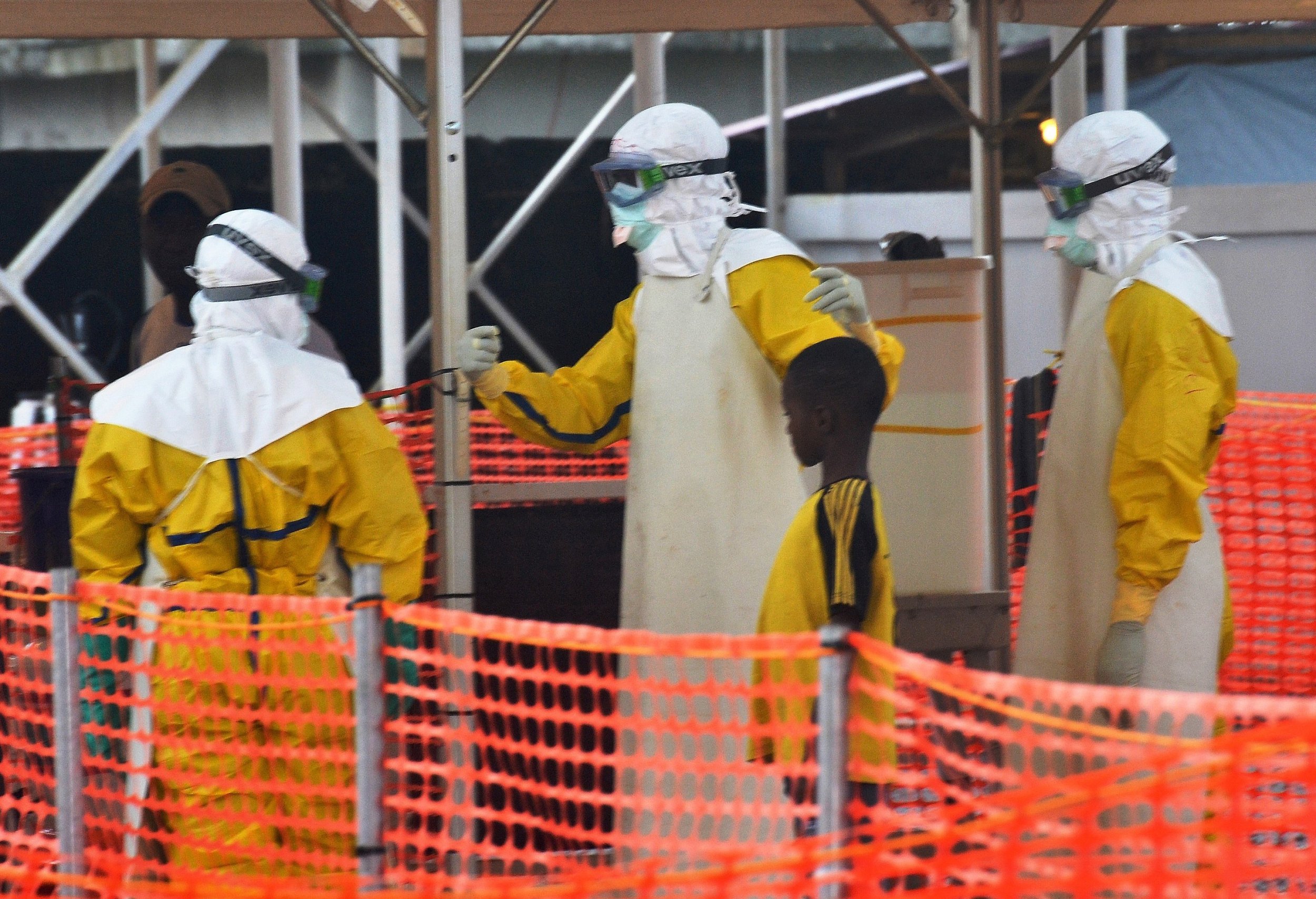
Transmission | Ebola Hemorrhagic Fever
- Blood or body fluids (urine, saliva, sweat, feces, vomit, breast milk, amniotic fluid, and semen) of a person who is sick with or has died from Ebola disease.
- Objects (such as clothes, bedding, needles, and medical equipment) contaminated with body fluids from a person who is sick with or has died from Ebola disease.
- Infected fruit bats or nonhuman primates (such as apes and monkeys).
- Semen from a man who recovered from Ebola disease (through oral, vaginal, or anal sex). Ebolaviruses can remain in certain body fluids (including semen) of a patient who has recovered from Ebola disease, even if they no longer have symptoms of severe illness. There is no evidence that ebolaviruses can spread through sex or other contact with vaginal fluids from a woman who has had Ebola disease.
When people become infected with an ebolavirus, they do not start developing signs or symptoms right away. This period between exposure to an illness and having symptoms is known as the incubation period. A person can only spread an ebolavirus to other people after they develop signs and symptoms of Ebola disease.
A person can only spread an ebolavirus to other people after they develop signs and symptoms of Ebola disease.
Additionally, ebolaviruses are not known to be transmitted through food. However, in certain parts of the world, ebolaviruses may spread through the handling and consumption of wild animal meat or hunted wild animals infected with an ebolavirus. There is no evidence that mosquitoes or other insects can transmit ebolaviruses.
Risk
- Health workers and family members who do not use proper infection control while caring for patients with suspected or confirmed Ebola disease are at the highest risk of getting sick. Ebolaviruses can spread when people come into contact with infected blood or body fluids.
- Ebolaviruses pose little risk to travelers or the general public who have not cared for or been in contact with someone sick with Ebola.
Persistence of Ebolaviruses
Ebolaviruses can remain in areas of the body that are immunologically privileged sites after acute infection. These are sites where viruses and pathogens, like ebolaviruses, are shielded from the survivor’s immune system, even after being cleared elsewhere in the body. These areas include the testes, interior of the eyes, placenta, and central nervous system, particularly the cerebrospinal fluid. Whether an ebolavirus is present in these body parts and for how long varies by survivor. Scientists are now studying how long ebolaviruses stay in these body fluids among Ebola disease survivors.
These are sites where viruses and pathogens, like ebolaviruses, are shielded from the survivor’s immune system, even after being cleared elsewhere in the body. These areas include the testes, interior of the eyes, placenta, and central nervous system, particularly the cerebrospinal fluid. Whether an ebolavirus is present in these body parts and for how long varies by survivor. Scientists are now studying how long ebolaviruses stay in these body fluids among Ebola disease survivors.
During an Ebola outbreak, the virus can spread quickly within healthcare settings (such as clinics or hospitals). Clinicians and other healthcare personnel providing care should use dedicated, preferably disposable, medical equipment. Proper cleaning and disposal of instruments such as needles and syringes are important. If instruments are not disposable, they must be sterilized before using again.
Ebolaviruses can survive on dry surfaces, like doorknobs and countertops for several hours; in body fluids like blood, ebolaviruses can survive up to several days at room temperature. Cleaning and disinfection should be performed using a hospital-grade disinfectant.
Cleaning and disinfection should be performed using a hospital-grade disinfectant.
In the United States, hospital-grade disinfectant refers to U.S. Environmental Protection Agency (EPA)-registered hospital disinfectant [PDF – 278 KB] with a label claim for a non-enveloped virus.
Ebola virus disease – NHS
Ebola virus disease is a serious, rare infection usually found in certain parts of Africa. It’s caught by coming into contact with the body fluids of an infected person or wild animal.
Check if you’re at risk of Ebola
Ebola is caused by a virus caught from wild animals. It spreads from person to person when you touch infected body fluids, such as semen, saliva, blood, poo, pee and vomit.
There have been outbreaks of the virus in Central and West Africa in the past.
The most recent outbreaks have been in:
- Uganda
- Guinea
- Democratic Republic of Congo
It’s never been spread from person to person in the UK.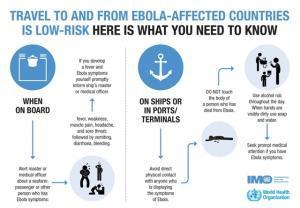
Information:
Check before you travel
It’s important to check the Ebola risk for the country you’re travelling to before you go.
Check the risks for a country you’re travelling to on the Travel Health Pro website
How to avoid Ebola
If you’re travelling to an area where Ebola is found, get advice from a travel clinic before you go.
It’s best to do this at least 4 to 6 weeks before you travel, but you can still get advice at the last minute if you need to.
Do
wash your hands regularly
wash and peel fruit and vegetables before eating them
try to avoid anyone who has symptoms of Ebola
use a condom if you have sex with someone who’s recovered from Ebola in the last few months
Don’t
do not touch or eat raw or undercooked meat from wild animals in countries where Ebola is found
do not touch a person, their body fluids (such as vomit) or anything they may have come into contact with (such as clothes and bedding) if they’ve died from Ebola or have Ebola symptoms
do not touch the body fluids of someone who has Ebola, or anything they may have come into contact with (such as clothes and bedding)
do not handle wild animals, especially bats, monkeys, baboons and chimpanzees
Symptoms of Ebola
Ebola symptoms can start between 2 and 21 days after being infected.
They can appear suddenly and include flu-like symptoms, such as a high temperature, extreme tiredness and a headache.
Other symptoms include:
- being sick
- diarrhoea and tummy pain
- a skin rash
- yellowing of the skin and eyes
- blood in your poo
- lots of bruises all over your body
- bleeding from your ears, eyes, nose or mouth
Urgent advice: Call NHS 111 if:
- you have travelled to a country where Ebola is found and have Ebola symptoms
- you have come into contact with someone who’s travelled to a country where Ebola is found and have Ebola symptoms
Stay at home and avoid close contact with other people, including sharing towels or bedding, until you’ve been told what to do.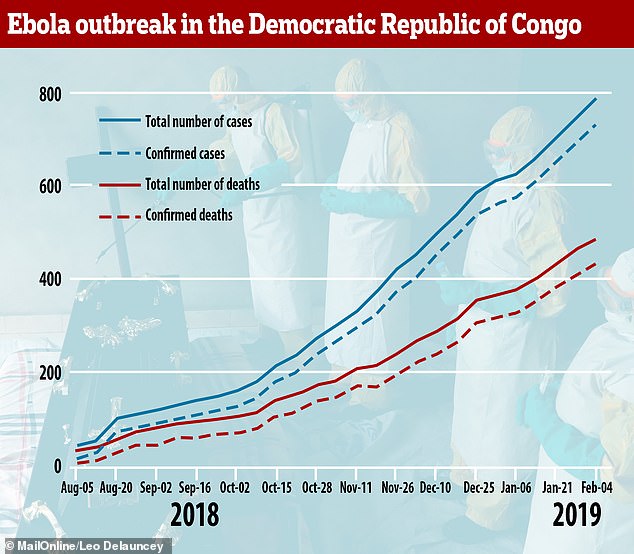
Get medical advice quickly if you have Ebola symptoms while you’re travelling.
Treatment for Ebola
Ebola is an emergency and needs to be treated quickly.
You’ll usually be treated in isolation in hospital and will need specialist care in an intensive care unit.
Treatment involves managing your symptoms, such as:
- help with breathing
- fluids given directly into a vein to stop you becoming dehydrated
Page last reviewed: 11 January 2023
Next review due: 11 January 2026
WHO assessed the risks of an outbreak of Ebola hemorrhagic fever in Africa
Updated issue
WG-Week
Motherland
Thematic annexes
Union
Updated issue
9 0002 Society
29.04.2022 10:06
Share
Irina Innocent
Cases of Ebola virus disease were announced by the Ministry of Health of the Republic of the Congo.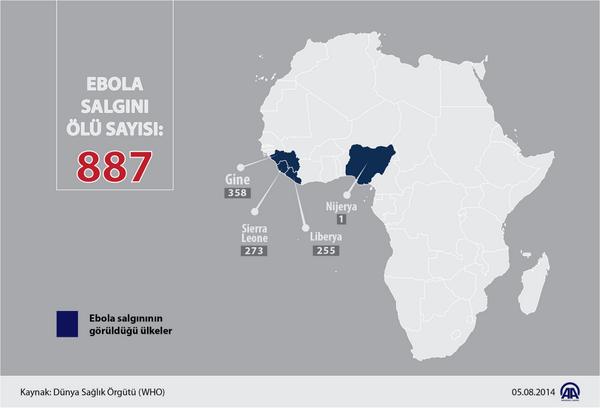 Now two cases of the disease have been identified (both patients have died), the condition of about 270 people who have been in contact with patients (as of April 27) is being monitored, the WHO said.
Now two cases of the disease have been identified (both patients have died), the condition of about 270 people who have been in contact with patients (as of April 27) is being monitored, the WHO said.
Congo’s previous outbreaks occurred in 2020 and 2018, with 130 and 54 cases of Ebola, respectively.
A 31-year-old man from the city of Mbandaki (located in the Equatorial Congo province) fell ill on April 5 with a fever and headache. He was treated at home with antimalarial drugs and antibiotics. After 11 days, with deterioration and signs of hemorrhage (internal bleeding), he was hospitalized in two medical institutions. The WHO report specifically noted that infection prevention and control measures at both hospitals “were inadequate.” A positive test result for the Ebola virus was not received until April 21, the day the patient died.
Four days later, on April 25, health authorities confirmed a second case of Ebola in a 25-year-old woman who was a family member of the first case. She developed symptoms on 13 April and was also treated at home for five days. At the same time, despite the symptoms, she visited a prayer house, a medical center, and a pharmacy. The woman died April 25.
She developed symptoms on 13 April and was also treated at home for five days. At the same time, despite the symptoms, she visited a prayer house, a medical center, and a pharmacy. The woman died April 25.
Medical services are now monitoring about 270 people who may have been exposed to the infection.
There are natural reservoirs of the Ebola virus in the Congo. The last outbreak, which lasted about six months, ended in November 2020, when 130 cases of infection were registered.
National and provincial emergency committees have been activated to prevent the spread of infection in the Congo: contacts are being traced, surveillance at entry points and checkpoints is in place, people with suspicious symptoms are isolated, laboratory confirmation of possible infection is provided. Anti-epidemic measures are being taken in medical institutions.
On April 24, the International Vaccine Coordinating Group received and approved the use of 1,307 doses of Ebola vaccine. Ring vaccination (contact) began on 27 April. Twenty cases were treated with monoclonal antibodies.
Ring vaccination (contact) began on 27 April. Twenty cases were treated with monoclonal antibodies.
WHO has assessed the risks of spreading this dangerous infection, which is characterized by an extremely high mortality rate – on average, every second sick person does not survive.
“Because the first patient was isolated after the onset of hemorrhagic symptoms, there is a risk of Ebola spreading in the province. In addition, due to inadequate epidemic protection measures taken in medical facilities, there is also a risk of infection among healthcare workers and related patients of the two medical institutions visited by the patient before the diagnosis was confirmed,” the WHO said in a statement.
Certificate “RG”
Ebola hemorrhagic fever is an endemic disease in the Republic of the Congo. The Ebola virus is present in animal waters in the region. A combination of environmental and socioeconomic factors such as poverty, public distrust, weak health systems and political instability could accelerate the rate of infection, the WHO concluded.
WHO recommendations
WHO recommends the following risk reduction measures as an effective way to reduce human transmission.
– Reducing the risk of virus transmission to humans through contact with infected fruit bats or monkeys and consumption of their raw meat; animals should be handled with gloves and other protective clothing; Animal products (blood and meat) must be thoroughly cooked before consumption.
– Reducing the risk of human-to-human transmission of the virus through contact with people with Ebola symptoms, especially their body fluids. Promptly refer any suspected cases to a health facility where the patient should undergo appropriate testing, triage and isolation.
– Personal Protective Equipment (PPE) must be worn when caring for patients with suspected or confirmed Ebola. Regular handwashing is required after visiting patients in the hospital and after touching or coming into contact with any bodily fluids.
– Reducing the risk of possible sexual transmission. Contact with body fluids should be avoided and washing with soap and water is recommended. However, WHO does not recommend isolating convalescent male or female patients who have tested negative for Ebola virus.
Contact with body fluids should be avoided and washing with soap and water is recommended. However, WHO does not recommend isolating convalescent male or female patients who have tested negative for Ebola virus.
Share
HealthEbola epidemic
The Ebola virus outbreak was called an international emergency
Science
close
100%
The World Health Organization has declared the Ebola epidemic in the Congo a global emergency. The WHO Emergency Committee called for a redoubling of efforts to control the disease and made a number of recommendations for affected countries and those at risk.
The World Health Organization has declared the Ebola epidemic in the Democratic Republic of the Congo (DRC) a global emergency. This was announced on by WHO Director General Tedros Adhanom Ghebreyesus.
“The time has come for the world to take notice and redouble its efforts. We must work together with the DRC in solidarity to end this outbreak and build a more efficient healthcare system,” he said. — For almost a year, work was carried out in the most difficult conditions. We all owe it to these first responders – not only to WHO, but also to government, partners and communities, who have shouldered most of the burden.”
We must work together with the DRC in solidarity to end this outbreak and build a more efficient healthcare system,” he said. — For almost a year, work was carried out in the most difficult conditions. We all owe it to these first responders – not only to WHO, but also to government, partners and communities, who have shouldered most of the burden.”
This was the fourth meeting of the Committee of Emergency Situations since the outbreak was announced on August 1, 2018. The first case of fever was reported this week in the city of Goma, with a population of over 2 million. The city is located near the border with Rwanda and is located at the intersection of significant regional roads.
Ghebreyesus urged everyone to intensify efforts to fight this outbreak and help build a better healthcare system in the DRC. He warned of the threat of the spread of fever throughout the region, but it is unlikely to go beyond it.
Ghebreyesus also emphasized that the organization does not recommend the introduction of “any kind of travel or trade restrictions” – this may hinder the fight against the virus instead of limiting the spread.
“Closing borders can have devastating consequences for the lives of people who cross them daily to trade, study or visit relatives. Such restrictions force people to use illegal and uncontrolled ways to cross borders, which increases the likelihood of the spread of diseases,” he explained.
The Committee acknowledged the lack of a vaccine against the virus despite the manufacturer’s efforts to double supply by 2020 and recommended that WHO, together with Member States and manufacturers, immediately take all measures to increase supply, including considering the possibility of interaction with contract manufacturing organizations and technology transfer .
The Committee submitted a number of recommendations to the Director-General of WHO for consideration. Affected countries should continue to educate the population about possible prevention measures, continue cross-border screening and screening on major inland roads, work with the UN and partners to reduce risks and improve public health systems, strengthen surveillance measures to reduce the proportion of fatal cases among the population.
The optimal vaccination strategies that have the greatest impact on outbreak control, as recommended by the WHO Strategic Advisory Group of Experts, must also be rapidly implemented. Prevention of nosocomial infections is essential.
Neighboring countries at risk should urgently work with partners to increase their readiness to detect and manage imported cases. It is also recommended to monitor population movements and sociological behaviors that can help predict the risk of disease spread.
As in the affected countries, public awareness of the risks needs to be raised. Also, countries at risk should be granted approvals for the use of experimental drugs and vaccines.
National authorities should work with airlines and other transport and tourism industries to ensure that they do not violate WHO guidelines for international travel.
By April 2019 in the Congo from the Ebola virus epidemic killed more than 800 people. In total, 1251 cases of infection were registered, of which 1185 cases were confirmed
Subscribe to Gazeta. Ru in News, Zen and Telegram.
Ru in News, Zen and Telegram.
To report a bug, select the text and press Ctrl+Enter
News
Zen
Telegram
Picture of the day
Military operation in Ukraine. Day 4700003
The surrogate “Mr. Cider” had a source in the police. Kolokoltsev fired two subordinates
The head of the Ministry of Internal Affairs of Russia fired the deputy head of the Main Directorate of the Ministry of Internal Affairs for the Samara Region because of surrogate cider
“You won’t have to fly through Kazakhstan.” Airlines will open an additional corridor to the south
RBC: In Russia, from June 12, a second directing air corridor will open for flights to the south
The US and Britain intend to squeeze Russia out of the nuclear energy market
Biden pointed to the contribution of the collective West to the preparation of the counteroffensive of Ukraine
The Ministry of Health of the Russian Federation has updated data on victims of surrogate cider poisoning
A group of prisoners of the Armed Forces of Ukraine of Transcarpathian origin was transferred to Hungary with the participation of the Russian Orthodox Church
News and materials
32-year-old singer Nyusha starred in a leather corset and trousers
Borrell called on Russia to cease fire in the Kherson region
“It’s about grandmas too”: ex-Barcelona player about Messi’s transfer to Beckham’s club
The prosecutor’s office will check the manufacturer of Mars bars for financing the Armed Forces of Ukraine
Australian oceanographers discover single-celled ‘mud ball’ off Seamount
Hairdresser Akulshina explained why gray hair turns yellow
Australian admitted to pushing a gay American off a cliff in Sydney in 1988
The new coach of “Washington” highlighted the special quality of Ovechkin
74-year-old designer Vera Wang showed a sculpted torso in a short top
In Crimea, it was proposed to cut off the supply of resources to countries supplying weapons to Ukraine
Kim Kardashian went on a date with a new lover to a secret restaurant
The Olympic champion condemned the hate against Zagitova
The shark that killed the Russian in Egypt was sent for research
The winner of the “Battle of Psychics” was detained on suspicion of participating in RDK
Salikhova explained the failure of the Spartak captain in the match against Wings
Beer scented deodorant launched in the UK
The doctor added his sperm to the coffee of a 16-year-old patient for a whole year
The UN spoke out about the use of Nazi symbols by the Ukrainian military
All news
“The enemy retreated with heavy losses. ” Russian forces repelled the offensive in the Zaporozhye direction
” Russian forces repelled the offensive in the Zaporozhye direction
Shoigu announced an attempt by the Armed Forces of Ukraine to break through the defenses in the Zaporozhye region tonight
“Screamed” Papa “. A shark tore apart a Russian on the beach of Hurghada
The father of a Russian who died from a shark attack said that everything happened very quickly
She became famous because of the viral video, she loved stories: what is known about the singer who died in Tatarstan
16:35
Putin discussed the situation in the area of the Kakhovskaya hydroelectric power station with the acting head of the region
Balance: as a result of the shelling of the Armed Forces of Ukraine, people died at the evacuation point in Golaya Pristan
“Stop Word”: a deceptive erotic thriller, as if from the universe of the series “The Descendants”
Review of the thriller about BDSM relationships “Stop Word”
“Empty business and bestiality. ” All about the conflict involving Ponasenkov and an unknown man
” All about the conflict involving Ponasenkov and an unknown man
112: a criminal case was opened against lawyer Zaripov after a conflict involving blogger Ponasenkov
New York drowned in smoke: what the city looks like now
Refugee from Syria attacked children with a knife in the French city of Annecy
Six small children were injured
Cars drowned, couriers do not work: consequences of rain and hurricane in Vladivostok
Flood occurred in Vladivostok due to heavy rain
It became known about the first victims of the emergency at Kakhovskaya HPP
The mayor of Nova Kakhovka reported that five shepherds drowned during the flood after the destruction of HPP
They fell into a pit, slept in the gym, ate borscht without meat.
